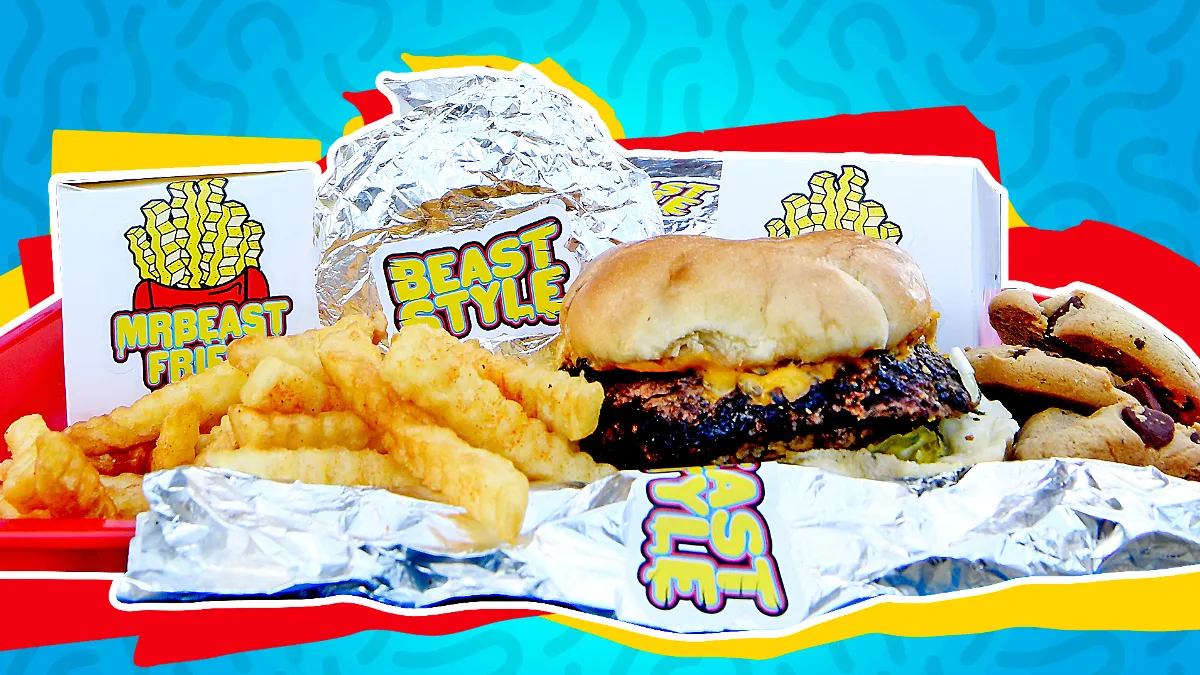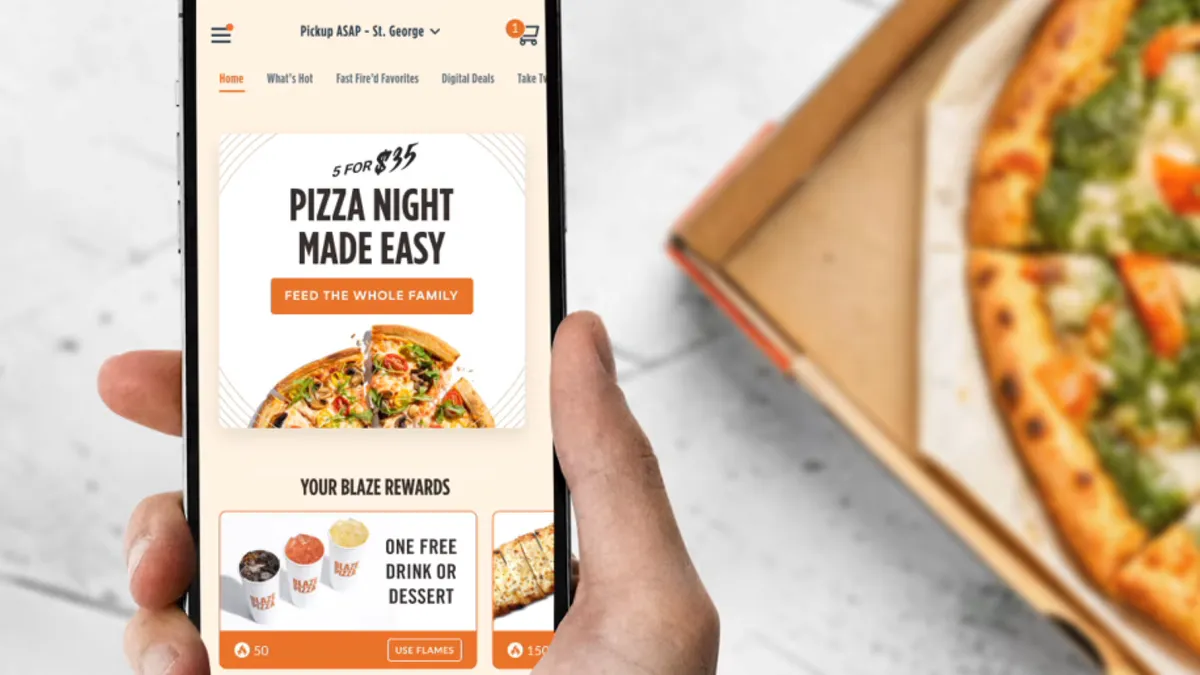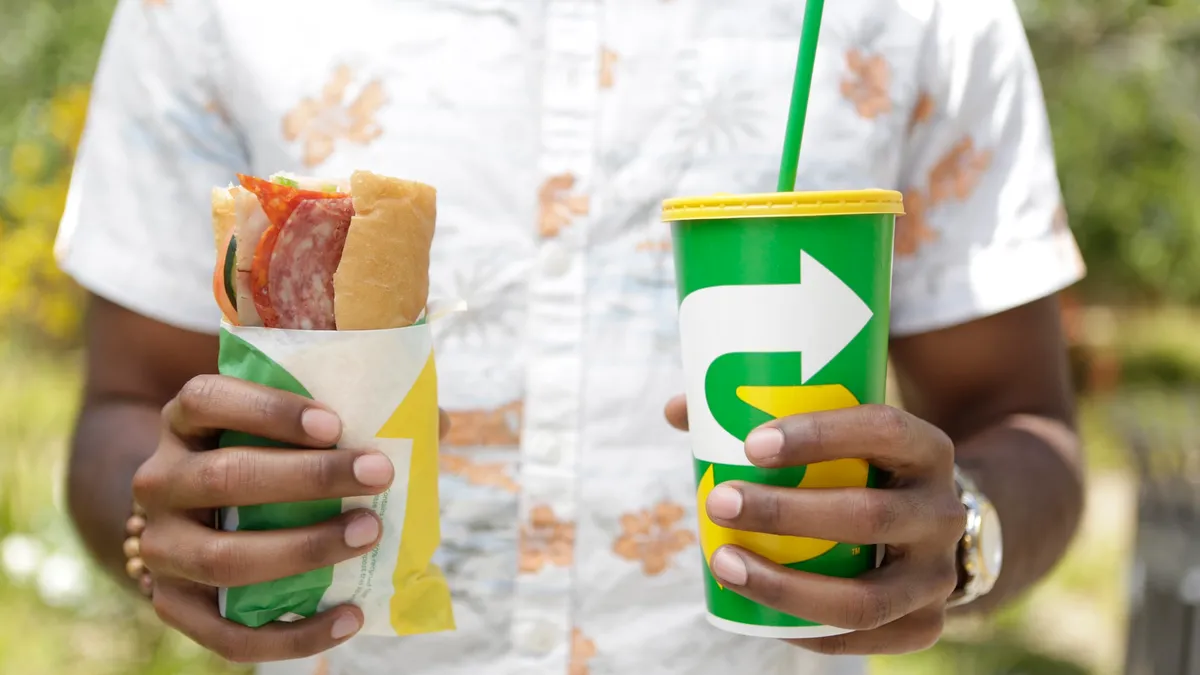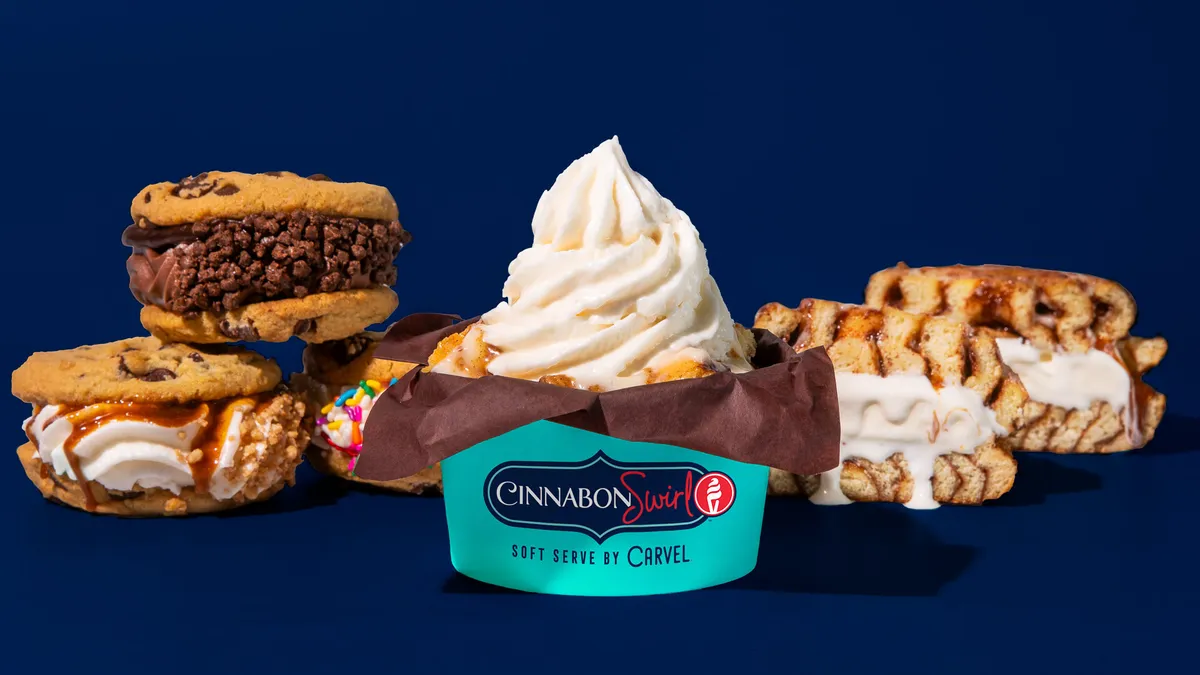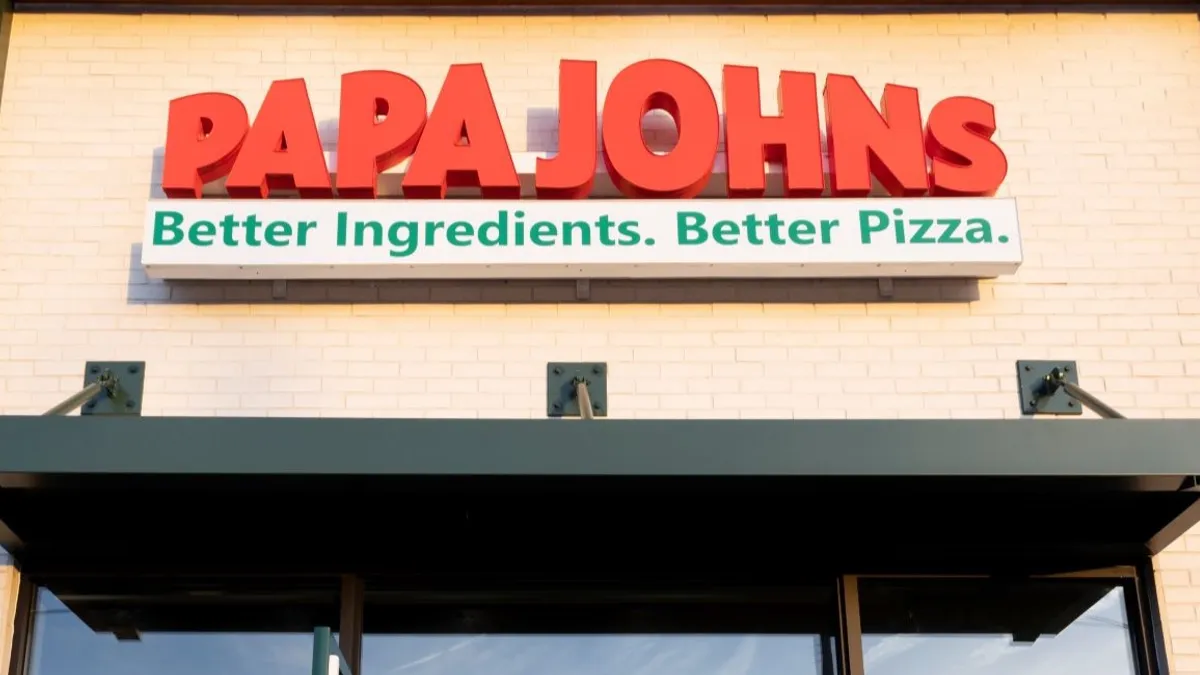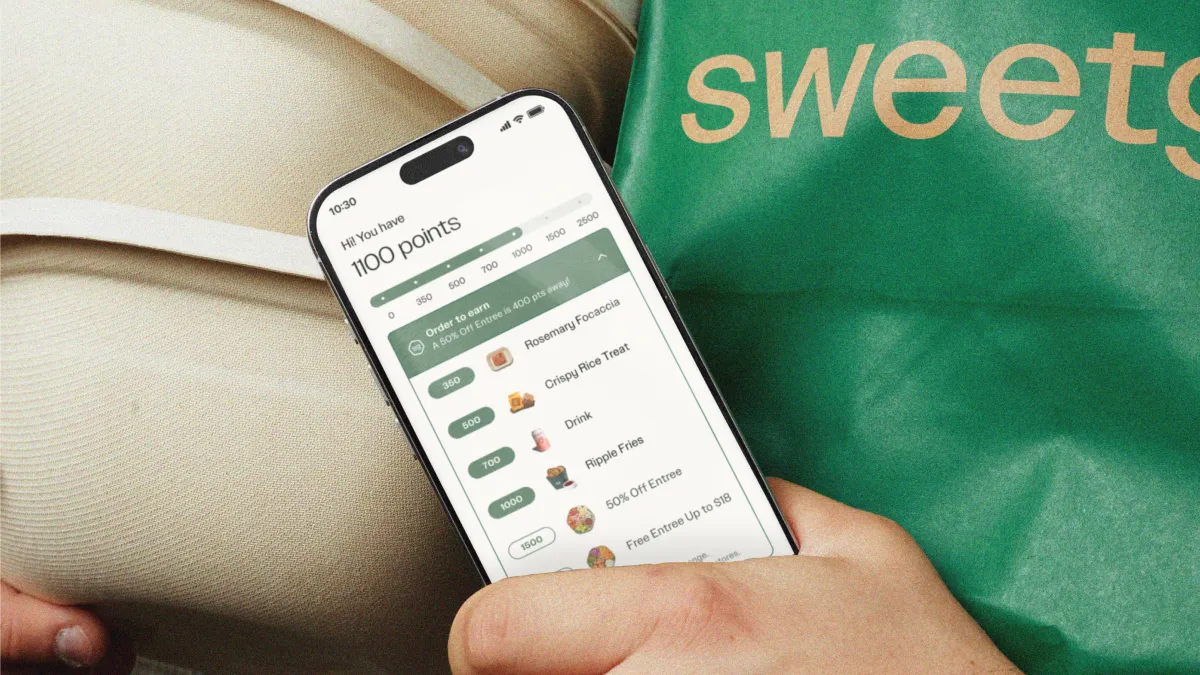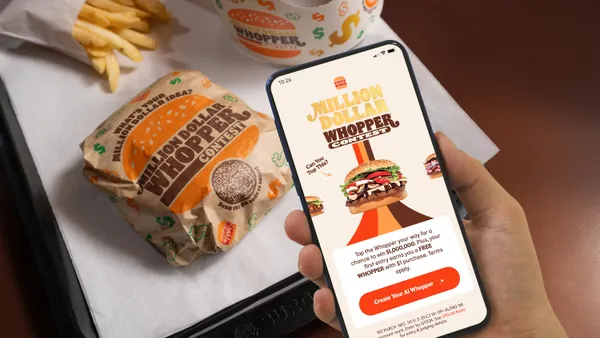This is the third in a three-part series highlighting host kitchen partnerships and virtual brands. The first in the series discussed how restaurants can become host kitchens while the second discussed brands expanding through host kitchens.
When 22-year-old YouTube celebrity MrBeast, aka Jimmy Donaldson, opened a restaurant last November, he paid people to try his burgers. Before the restaurant opened for the day, the 1,000-car line led the police to shut down a mile of traffic. Giving away money to drive-thru customers is certainly an unusual business strategy, but it put the restaurant concept on the map.
The delivery-only brand initially launched in 300 existing restaurant locations through a partnership with Virtual Dining Concepts in December, and within three months, MrBeast Burger sold 1 million burgers, generating at least $32 million in sales. He was able to parlay his success as a social media influencer and his nearly 50 million followers into a viral restaurant brand. Since then, its network has grown to over 1,000 locations nationwide.
While this internet sensation appeared to be an overnight success, launching a virtual-only brand takes a lot of strategy, experts said. Still, many other celebrities — including George Lopez, Mariah Carey, Mario Lopez and Wiz Khalifa — are jumping into the virtual restaurant trend alongside legacy chains. Some analysts wonder whether virtual brands can be sustainable in an already saturated industry.
"I think a few of these [virtual restaurant brands] have been very interesting where [they] are getting attention from investors and operators because of the velocity at which they are able to scale," Daniel Fleischmann, vice president of growth equity investor Kitchen Fund, said.
While MrBeast Burger garnered initial buzz, its Yelp reviews have been in the two- to three-star range, which isn't ideal for a restaurant, Fleischmann said. Many reviewers complained about food quality and the small portions.
"I think this underscores the complexity of the training, the supply chain and, broadly, the operational elements of trying to, at scale, bring consumers a great product consistently and ... at a good price point as well," Fleischmann said.
Celebrity partnerships and strategic marketing can help virtual brands gain traction
Any operator wanting to launch a virtual brand, or even host one, shouldn't expect a million dollars in sales and immediate success, Geoff Alexander, Wow Bao CEO and president, said. Wow Bao is leaning heavily into expansion through partnerships with other restaurants that sell its buns, potstickers and bowls out of their existing kitchens.
"Anybody can start up something tomorrow and turn it on [on] third-party [sites]. But there are headaches involved with that that I don't think everybody thinks about, such as [figuring out] branding, packaging, [company] name, recipes, R&D," Alexander said.
Nextbite, for example, has created over 15 brands over the past few years after careful research, creating marketing and food packaging that support delivery-only business.
The company has also harnessed celebrity star power to highlight its platform. Nextbite partnered with George Lopez this year to develop George Lopez Tacos, leveraging the actor's influencer audience, said Alex Canter, CEO of Ordermark and co-founder of Nextbite. Concepts backed by celebrities and influencers help get consumers excited to try the brand, allowing host kitchens to maximize their benefits, Canter said.
The popularity of virtual brands is creating crowding on third-party apps, Canter said. He estimates there are twice as many restaurants on third-party delivery platforms compared to a couple of years ago, but restaurants should be wary of the challenges that come with growing an online-only diner base.
"It is really important to dive in on what it takes to market these brands directly to reach the audience and maximize the placement and the SEO on these different platforms and market outside of the app," Canter said.
Nextbite has spent a couple of years figuring out what works and what doesn't, what sort of promotions are going to get people to try the food for the first time and how often they should be posting about it. In September, George Lopez Tacos used a taco truck and traveled to four locations in Denver giving away free tacos and offering $10,000 in cash giveaways to help promote the brand in Nextbite's hometown. The event had strong social media reach the four days the taco truck was available and 2,000 customers tried the menu items.
Nextbite helps its host kitchen partners prepare and market food from its brands, and also monitors the host restaurant's performance to ensure food consistency. The company aggregates reviews across different platforms to provide real-time feedback for the facility partners to ensure they are meeting certain standards, Canter said. For example, the company has a secret shopper program where it pays consumers to try its restaurants. Shoppers fill out an extensive questionnaire and upload pictures of food to make sure everything arrives the way it is intended.
"I think there are a lot of people out there that are just kind of throwing brands around and not really thinking about how important the food quality is," Canter said. "And that is something that a ton of consumer behavior and the use of a lot of data can determine what kind of brands we should be building in the first place."
Companies that invest in the right packaging, figure out what kind of food delivers well and have been thoughtful about the experience itself are going to make a difference, Canter said.
For example, when Nextbite launched the George Lopez Tacos across several markets, it created a deconstructed, build-your-own taco kit that comes with a stack of tortillas, a pile of meat and the sides and sauces. This provides not just an interactive experience, but a better-quality meal, Canter said. Even if the kit has been sitting in a car for 20 to 30 minutes, it would be in better shape than pre-prepared tacos.
"I think right now is the Wild West of virtual brands. We don't know what will work and what's not going to work until we try it," Canter said. "So we are going to continue to experiment and launch different types of collaborations and partnerships to really try to dial in and figure out what's going to move the needle for our restaurants. And that includes a lot more partnerships [with celebrities] in the future."
Are virtual brands viable in the long term?
Experts agree that not all virtual brands will see long-term success. These concepts don't have the long histories of success that traditional restaurant chains can lean on, proven recipes or consumer recognition. Because of this, virtual restaurant brands are likely less sustainable than traditional ones, Rishi Nigam, CEO of Franklin Junction, said. The host kitchen facilitator works with a growing list of existing restaurant brands, like Nathan’s Famous, that are looking to expand their digital presence.
Many virtual brands last only about six months because they generate a ton of sales initially, but don't often receive repeat visits and then die out, Nigam said.
"If we wanted to talk about sustainability and the ability to generate new revenue or incremental profits, I think the jury's still out," Nigam said.
"I think right now is the Wild West of virtual brands. We don't know what will work and what's not going to work until we try it."

Alex Canter
CEO of Ordermark and co-founder of Nextbite
Buck Sleeper, head of retail experience consulting at EPAM Continuum, said he believes virtual brands weren't meant to last a long time.
"I think that's actually their role," Sleeper said. "That might require a mindset shift from how we look at brick-and-mortar right now. … The cycles are so much quicker with a virtual brand because you have so little physical infrastructure."
Existing restaurants that launch their own brands within their kitchens can run into trouble too, experts said.
"If your new virtual brand is built using the same items that are already in your kitchen and you're just wanting to highlight them under a different name, arguably you are probably cannibalizing some of the revenue from your incumbent brand in that delivery market," Nigam said.
Maintaining the same amount of marketing for virtual brands as traditional brands can also become costly.
"What you have to understand is those brands have to be propped up from a marketing perspective. It's going to be expensive to not only get off the ground, but to maintain it going forward," Darrin White, COO at Frisch's Restaurants, said. Frisch's has worked with several virtual brands as a host kitchen with Franklin Junction.
Still, there are virtual brand success stories. It's Just Wings, owned by Brinker International, grew to over $170 million in sales in its first year and has created a strong brand identity, White said. But as the business becomes less incremental, Brinker will have to figure out what its marketing plan will look like going forward for this brand, White said.
"It's not going to get any easier to stand out on a DoorDash right now. It's not going to be any easier to get customers to use your app," Michael Schaefer, global lead of food and beverage at Euromonitor International, said. "I'm not going to use an app for every single restaurant I like."
It may take a few years to see which virtual brands are successful, especially when it comes to those that have the best value proposition to consumers, Fleischmann said.
"I am not very bullish on the idea of 'Hey let's keep throwing virtual brands out there and they're all going to work,'" Fleischmann said.
How delivery-only brands will evolve in the future
The most successful virtual brands will likely be the ones that are the most transparent with customers, analysts said, especially since most diners weren't aware these concepts existed before the pandemic. According to a Datassential survey of consumers, 55% believe it is dishonest for restaurants to sell the same food under a different name, while 60% said they want virtual brands to share their locations and explain that they are digital only. Yelp added tags for operators to state they are delivery-only brands in September, which could help better transparency. Nextbite also says on the website for its virtual brands, including George Lopez Tacos, that the concept is a virtual restaurant.
Chuck E. Cheese learned the hard way that transparency is a key ingredient in virtual brand marketing when it launched its delivery-only Pasqually's Pizza & Wings concept in 2020. The eatertainment chain used the brand to expand into delivery during the pandemic, but many customers who thought they were supporting a local pizza chain were angered their food was actually coming from Chuck E. Cheese and felt deceived.
Chuck E. Cheese denied it was trying to deceive customers, previously telling Food & Wine that the addition of Pasqually's was a way to add delivery to its operations and provide a more premium option with pizza that had a thicker crust and extra sauce.
"I think that's actually an opportunity to put the customer back in control and have a voice in what the future of Pasqually's is in the same way that they look for customer input on their core brand," Sleeper said. "I think if you're not demonstrating or asking for that transparency, you're missing an opportunity to tailor the experience."
Other opportunities exist for collaboration between virtual brands and host kitchens. Sleeper said he would love to see incubators for developing brands where host restaurants can help fine-tune the brand's offerings and provide more feedback. This model could lead to a profit-sharing relationship that is more strategic than the standard host kitchen arrangement, he said.
"I think understanding from the host what's working, what's not, what’s necessary, what isn't is a really great way for the brand that's occupying that space to understand how they need to tune their business model and how they might take some of those learnings back to other properties they own or their brands that are in their own kitchens," Sleeper said.
Virtual brands can also provide a level of experimentation and a way to introduce new brands, Schaefer said, adding that he expects food and drink players to experiment with more virtual brands in the future. Wingstop launched its virtual-only brand Thighstop during the summer as a way to test a chicken thigh menu, for example. It did so well with customers that Wingstop brought the items onto its core menu and has since been winding down the brand.
"I don't think [virtual brands are] going away, but I also don't think we're going to see a future of primarily virtual brands," Schaefer said.
The evolution of direct-to-consumer retail brands may hint at where the virtual brand market is headed, Schaefer said. Many direct-to-consumer retail brands that generated initial excitement five years ago have since shuttered, such as Brandless and Shoes of Prey, because it is so expensive to advertise an online-only concept, he said. Other stores, such as AdoreMe and Casper, have adopted a hybrid presence, offering both physical retail outlets and online stores, he said.
"I suspect we could see the lines blurring between what we think of as host kitchen facilitators, what we think of as third-party ghost kitchen operators and as restaurants," Schaefer said. "If you have a virtual brand that is sufficiently big, I think it's only a matter of time before one of the ghost kitchen operators might say to them, 'You know we have a lot of space and maybe we can become a part of this as well,'" he said.
The post-pandemic environment will also make the restaurant more multi-faceted.
"A lot of restaurants did this out of desperation. They were just trying to keep the lights on. So as business starts to come back, there are more options. We're going to see a lot more models and a lot more permutations in terms of how to make this work," Schaefer said.



